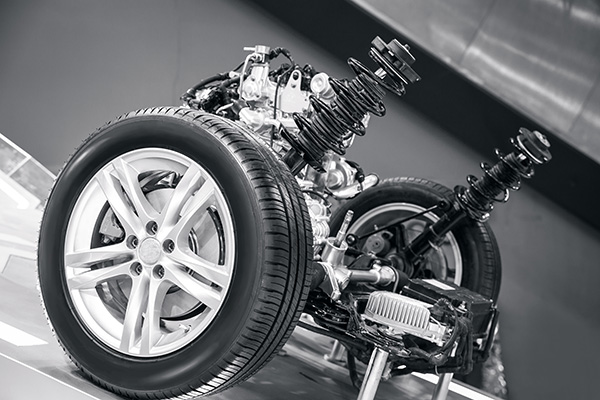
Your vehicle’s suspension system does far more than provide a smooth ride. It’s responsible for maintaining tire contact with the road, supporting stability during braking and cornering, and absorbing the bumps and vibrations of daily driving. When suspension parts begin to fail, it can affect not only comfort but also safety and vehicle performance. Recognizing the signs early helps you avoid expensive repairs and ensures a safer driving experience.
Uneven or Excessive Tire Wear
One of the first indicators of suspension trouble is uneven tire wear. If your tires show bald spots, inner or outer edge wear, or inconsistent tread patterns, it often means your suspension is not holding the wheels in proper alignment. Bad shocks, struts, or worn bushings can cause tires to skip across the pavement rather than roll evenly. Replacing tires alone won’t solve the issue if the suspension is the root cause.
A Rougher, Bumpier Ride
Your shocks and struts are designed to absorb bumps and vibrations, keeping the ride comfortable and stable. When these components wear out, you’ll start to feel every dip, pothole, or speed bump much more than usual. If your car bounces repeatedly after going over a bump, it’s a clear sign that the suspension system is no longer doing its job. Over time, this extra movement can affect steering control and tire wear.
Steering Problems and Poor Handling
A failing suspension can directly affect how your vehicle handles. You may notice that the steering feels loose, requires more correction to stay straight, or pulls to one side even when the road is flat. In some cases, the wheel may vibrate or shake, especially at higher speeds. These symptoms can stem from worn ball joints, tie rod ends, or control arm bushings. Because steering and suspension are closely linked, issues in one system often affect the other.
Vehicle Nose-Diving or Squatting
Pay attention to how your vehicle behaves when you brake or accelerate. If the front of the car dives sharply forward under braking, worn shocks or struts may be to blame. Similarly, if the rear squats down when accelerating, it could be a sign of weak suspension components. These conditions reduce stability and increase stopping distance, making it more difficult to stay in control during emergency maneuvers.
Clunking, Knocking, or Squeaking Noises
Unusual sounds are another common sign of suspension issues. Worn ball joints, bushings, or control arms can cause clunking or knocking noises when driving over bumps or turning the wheel. Squeaks may indicate dry or damaged bushings that are no longer cushioning the suspension parts properly. These noises should never be ignored, as they usually mean parts are nearing failure.
Vehicle Sitting Unevenly
If you notice that one corner of your car sits lower than the others, even when parked on a level surface, it’s often a symptom of a broken spring or damaged shock absorber. An uneven stance can also lead to additional stress on other suspension parts, worsening the problem over time. Checking ride height is a simple way to identify serious suspension trouble.
Why Prompt Repairs Are Needed
Delaying suspension repairs can have costly consequences. Worn parts place extra stress on connected components, leading to more widespread damage. Poor suspension also reduces braking efficiency and tire life, which drives up repair and replacement costs. Most importantly, a compromised suspension puts you and your passengers at greater risk, especially in emergency situations where stability and control are crucial.
Protect Your Safety With West Seattle Autoworks
At West Seattle Autoworks, we understand how important a healthy suspension system is for your vehicle’s safety and performance. Our experienced technicians can diagnose worn shocks, struts, and other suspension components before they cause bigger problems. If you’ve noticed rough rides, uneven tire wear, or steering trouble, bring your car to our Seattle shop for a complete suspension inspection.
Let us help you get back on the road with confidence and control.